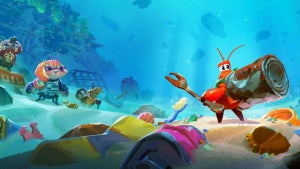Almost a decade ago, the astronauts of the International Space Station enjoyed a meal of historical significance, as it was the first one that included food -although only lettuce- grown and harvested in space.
This was a milestone for NASA, which is looking for ways to feed astronauts on future deep space missions, where large amounts of food cannot be transported.
This week, NASA announced its latest experimental food cultivation systems plan, revealing that it will send the Lunar Effects on Agricultural Flora (LEAF) experiment as part of the Artemis III crewed mission, currently scheduled for 2026.
What is this space mission about?
LEAF, created by Space Lab Technologies, based in Colorado, will investigate the effects of the lunar surface environment on space crops and will be the first experiment to observe photosynthesis, growth, and systemic plant stress responses under conditions of space radiation and partial gravity, NASA said.
The payload of the LEAF Beta, which includes a plant growth chamber with isolated atmosphere, will protect the plants from excessive lunar sunlight, radiation, and vacuum of space, while observing their photosynthesis, growth, and stress responses, according to the Space Laboratory.
After approximately one week on the lunar surface, the astronauts will bring back the samples of the seedlings to analyze them in detail under laboratory conditions. It will not be the first time that plants are grown on the lunar surface, as China grew a cotton plant there in a short-duration experiment in 2019.
The NASA also selected two other scientific experiments for the Artemis III mission. The Lunar Environment Monitoring Station (LEMS) is a set of compact and autonomous seismometers for long-term monitoring of the lunar seismic environment.
While the Lunar Dielectric Analyzer (LDA) will measure the lunar soil’s ability to propagate an electric field, which could help in the search for resources, especially ice.


